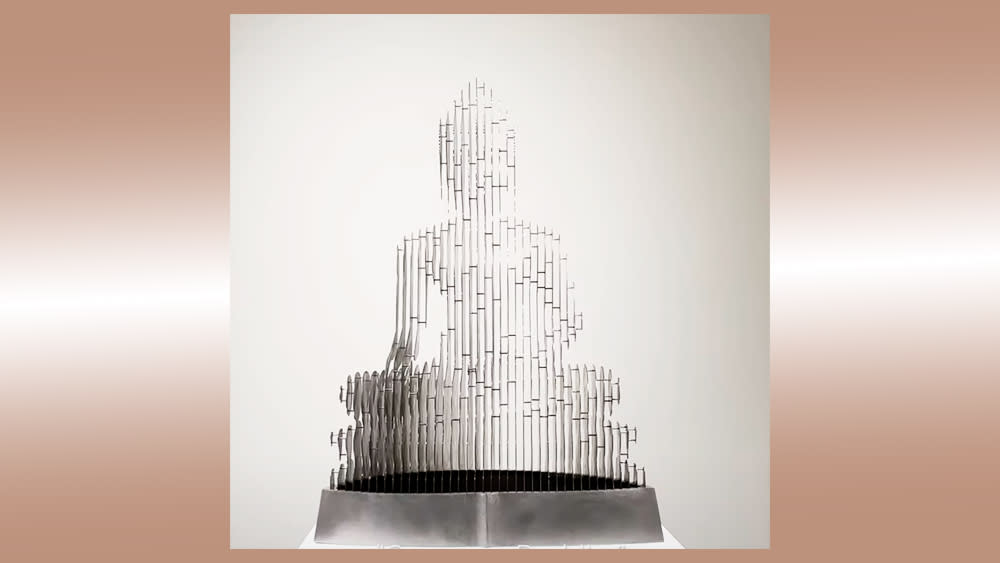This physicist's optical illusion sculptures are blowing the internet's mind

- Oops!Something went wrong.Please try again later.
We've been admiring the optical illusion sculptures of the quantum physicist Julian Voss-Andreae for some time here at Creative Bloq. His incredible pieces seem to almost disappear when observed from a particular angle, before coming into existence as we move around them.
The pieces continue to stun the internet and gallery goers alike, and the latest piece he's shared on YouTube is no exception. Quantum Buddha is made from Stainless steel and custom LED lighting, looks like a mirage on display (see our pick of the best optical illusions for more mind benders).
Julian Voss-Andreae is a German sculptor now based in Portland, Oregon. While he had an artistic background in painting, he went on to study physics, mathematics, and philosophy at the Universities of Berlin, Edinburgh and Vienna and completed his graduate research in quantum physics. It's that academic specialism that has informed his incredible optical illusion sculptures that seem to disappear into thin air.
Voss-Andreae moved to the US to study Sculpture at the Pacific Northwest College of Art, graduating in 2004. Today, his sculptures are in hundreds of private and public collections around the world, and videos oh his work regularly go viral on social media due to their uncanny effect.
Voss-Andreae says he came up with the idea for his disappearing sculptures by imagining himself in the place of the buckyball particle of his graduate research. He says he envisioned the motion of the human gait giving rise to the same mathematical structure as the internal oscillatory energy of the particle gives rise to the wave function of quantum physics.
Based on that idea, he began to visualise the wave fronts of the wave function as parallel slabs of steel to create "light wave beings" made from marine-grade stainless steel, which he sees as the coldest material in art. He talks about his process in the report for Here is Oregon below.
Voss-Andreae says he seeks to use this cold material to convey the soft and warm human form in a way that can appear solid or almost invisible depending on the viewer’s perspective. You can see more of his work on his website. For more illusions, see our round up of the best optical illusions of the year so far.

